
Key Points
- Road & Rails Starting to Get Back on Track?
- Bullish Breadth Divergences Beginning to Appear on the NYSE
- Looking for New Lows to Retreat
- S&P 500 Advance/Decline Line Holds Support
- Small Cap Breadth Is Mostly Flat
Chart in Focus
It is not a secret that the Transports has been a lagging part of the equity market. However, one part of the group has shown a sharp improvement over the past two weeks. The S&P 500 Road and Rail Index has rallied to reclaim the 50-day moving average after what appears to be a false break of support. At the same time, the relative ratio has moved higher to close above the 50-day moving average as well. These are steps in the right direction that we will continue to monitor for further improvement under the surface of the market.
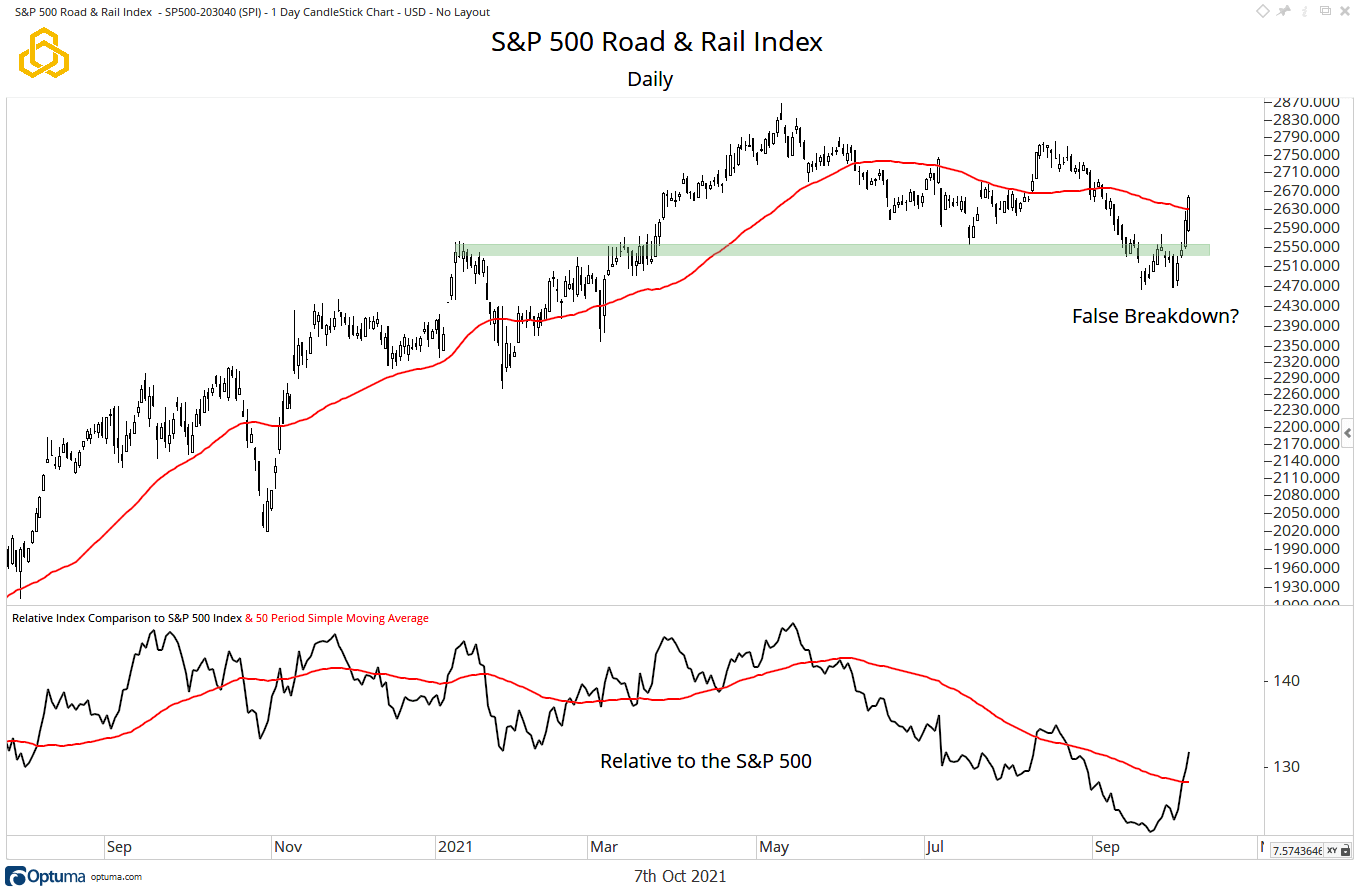
NYSE Breadth
The NYSE Advance/Decline Line continues to trade below the declining 50-day moving average. However, there is a small bullish divergence at play that has caught our attention. While the S&P 500 made a lower low this week, the A/D Line did not. At the same time, the A/D Line is holding above short-term support. We now want to see both the indicator and the index reclaim their moving averages to confirm trend changes to the upside.
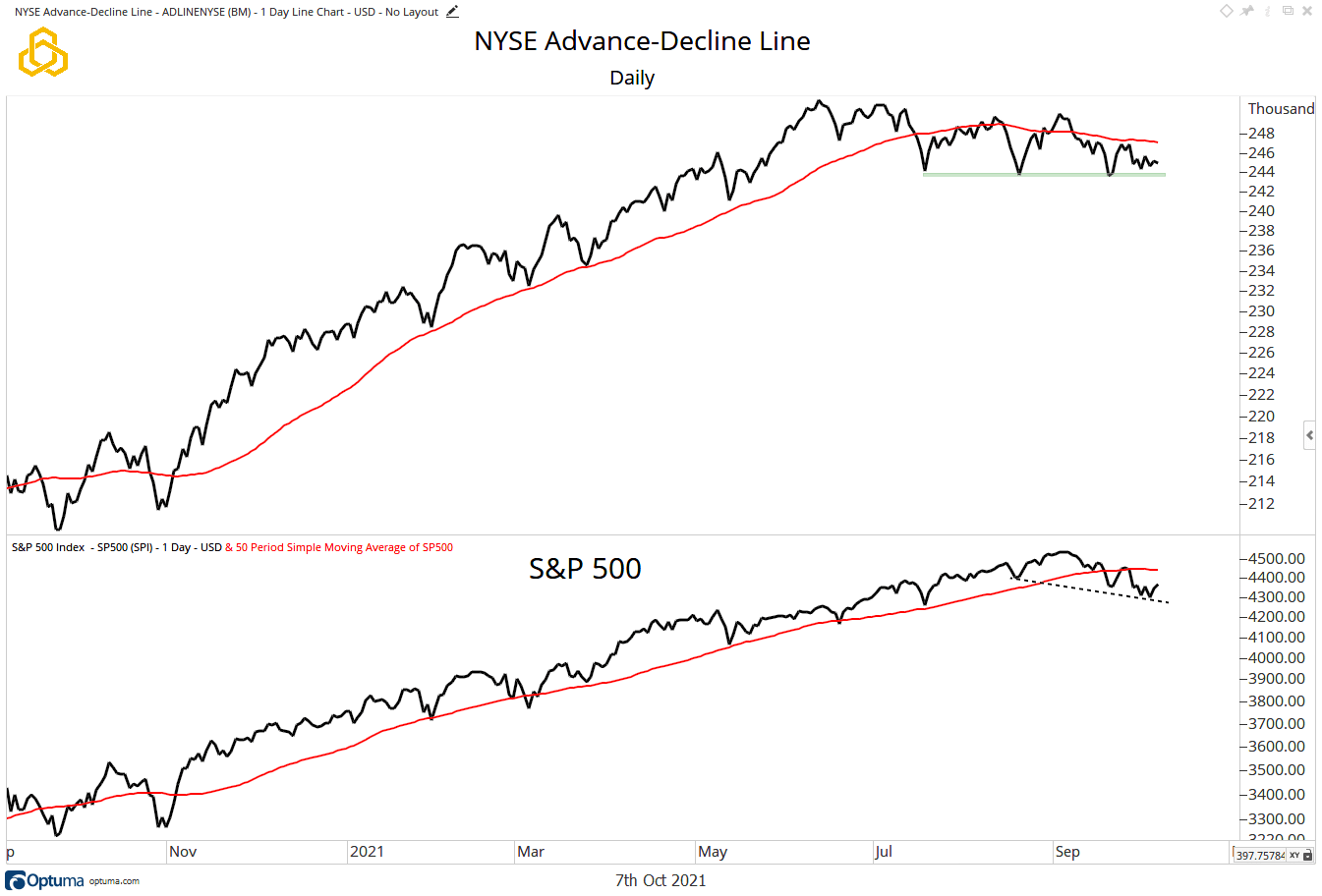
For the NYSE’s Advancing-Declining Volume Line, there is a similar bullish divergence in play. The indicator does remain below the 50-day moving average, along with the index, but it did not make a lower low with price this week.
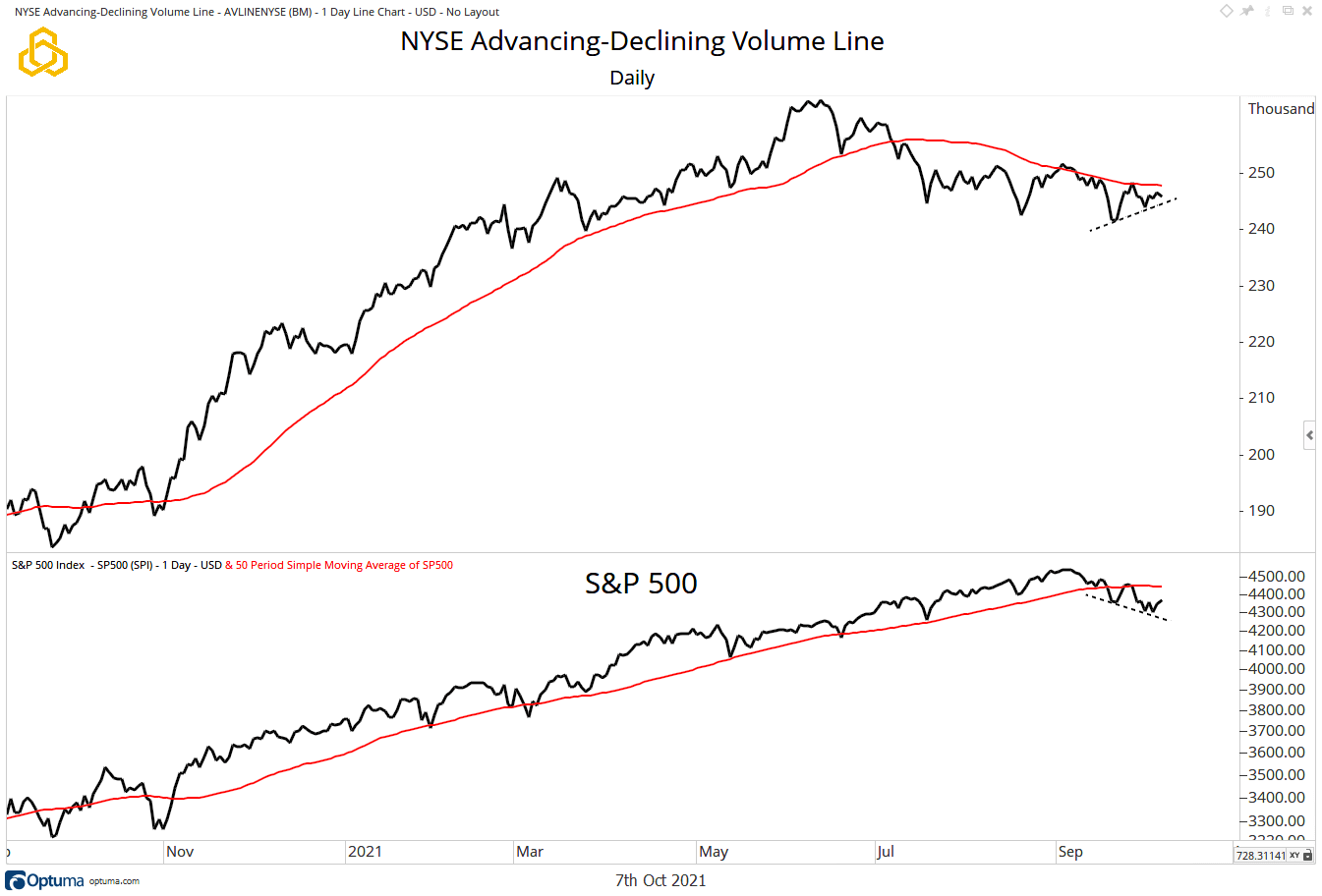
The 5-day moving averages of issues on the NYSE making new 52-week and six-month lows ticked higher again this week. Both metrics are at near levels that have marked turning points since the summer. However, this recent advance follow both metrics making higher lows in September. This is a development to watch closely.
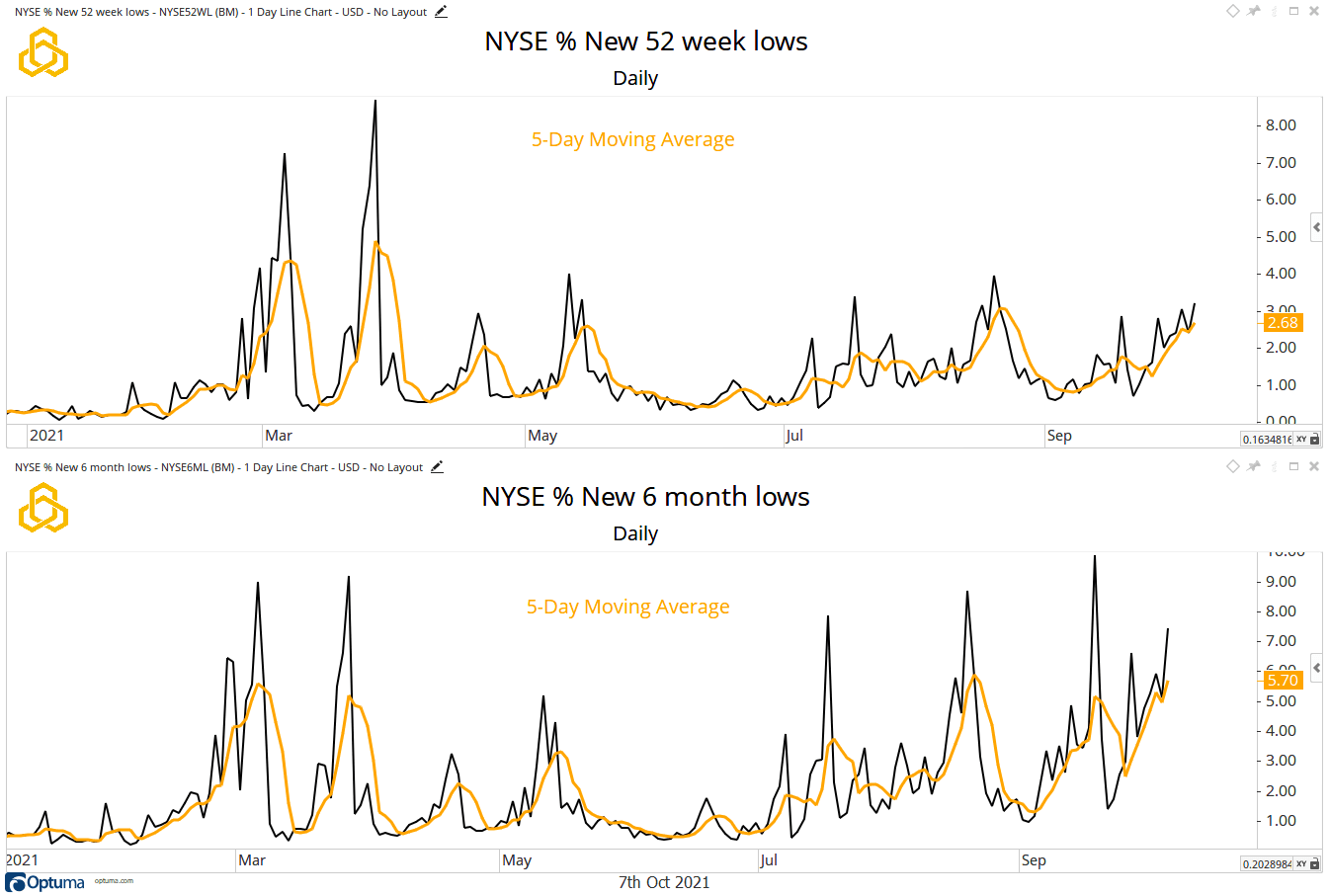
The 5-day moving averages of the percentage of NYSE issues making new six-month and 52-week highs continue to trend to the downside, with both metrics now near their lows for the year.
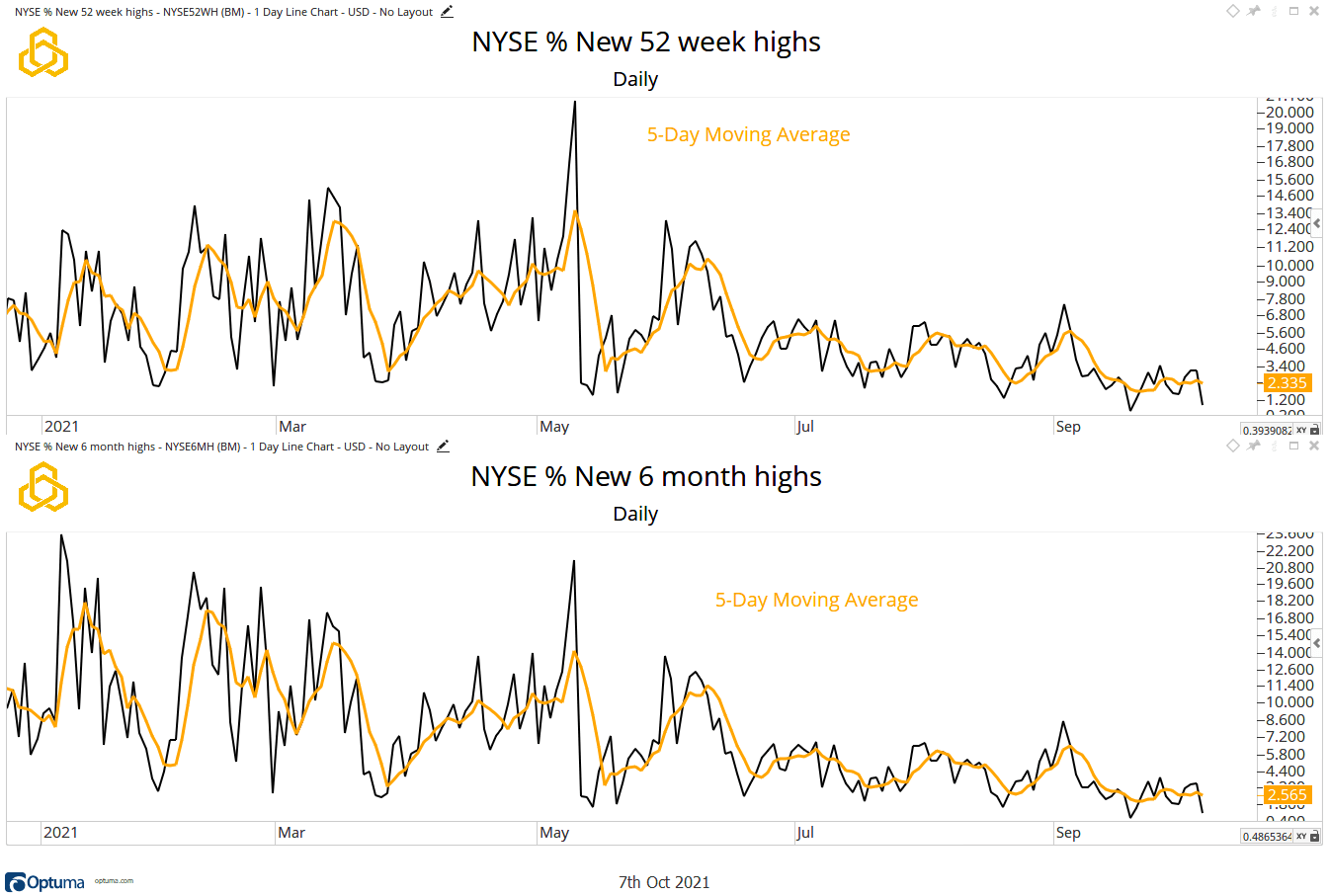
The percentage of stocks on the NYSE that are trading above their respective 200-day moving averages remains in a downtrend and has yet to flash a bullish divergence. The index remains above its own measure of the long-term trend.
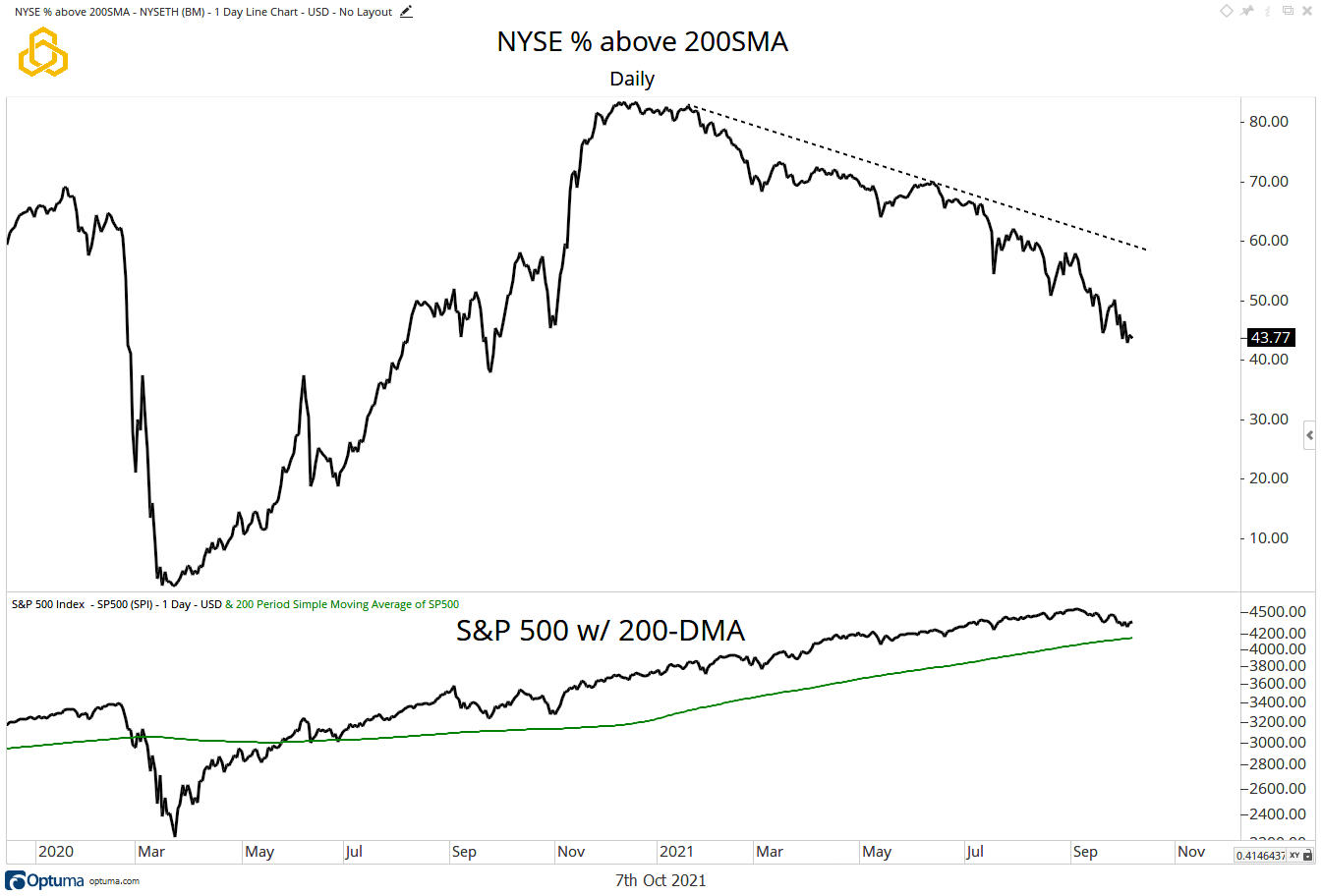
The percentage of issues on the NYSE trading above their 50-day moving averages is beginning to show signs of stabilization. Once again, this week, the indicator did now make a lower low with the S&P 500 and remains above short-term support. The S&P 500 does remain below its 50-day moving average, and we now look for a move above it to confirm the bullish divergence.
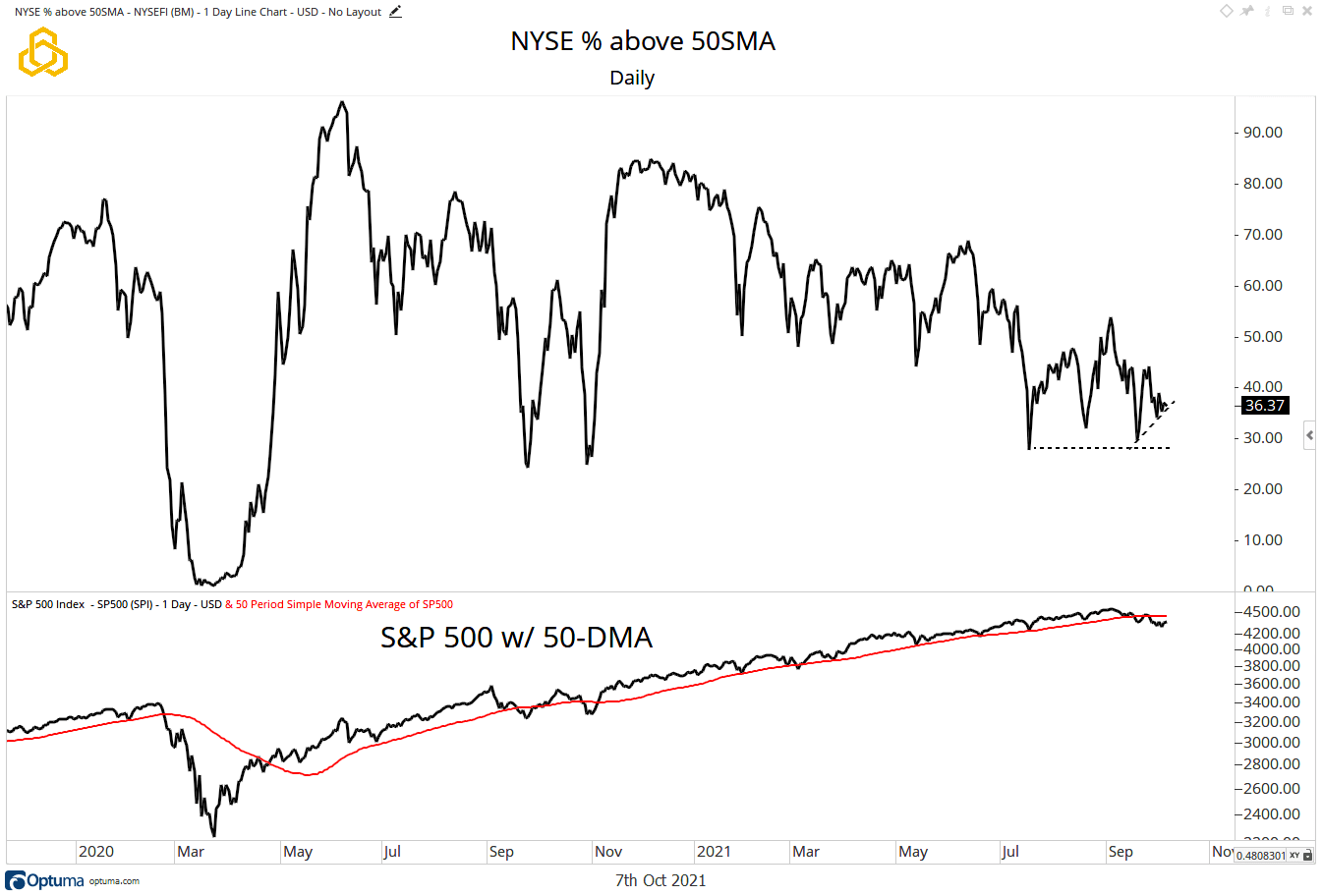
The percentage of stocks trading above their respective 20-day moving averages has made another higher low in the near term, continuing the bullish divergence that we first began to highlight last week. This improvement in short-term breadth is an important step in the index reclaiming its 20-day moving average.
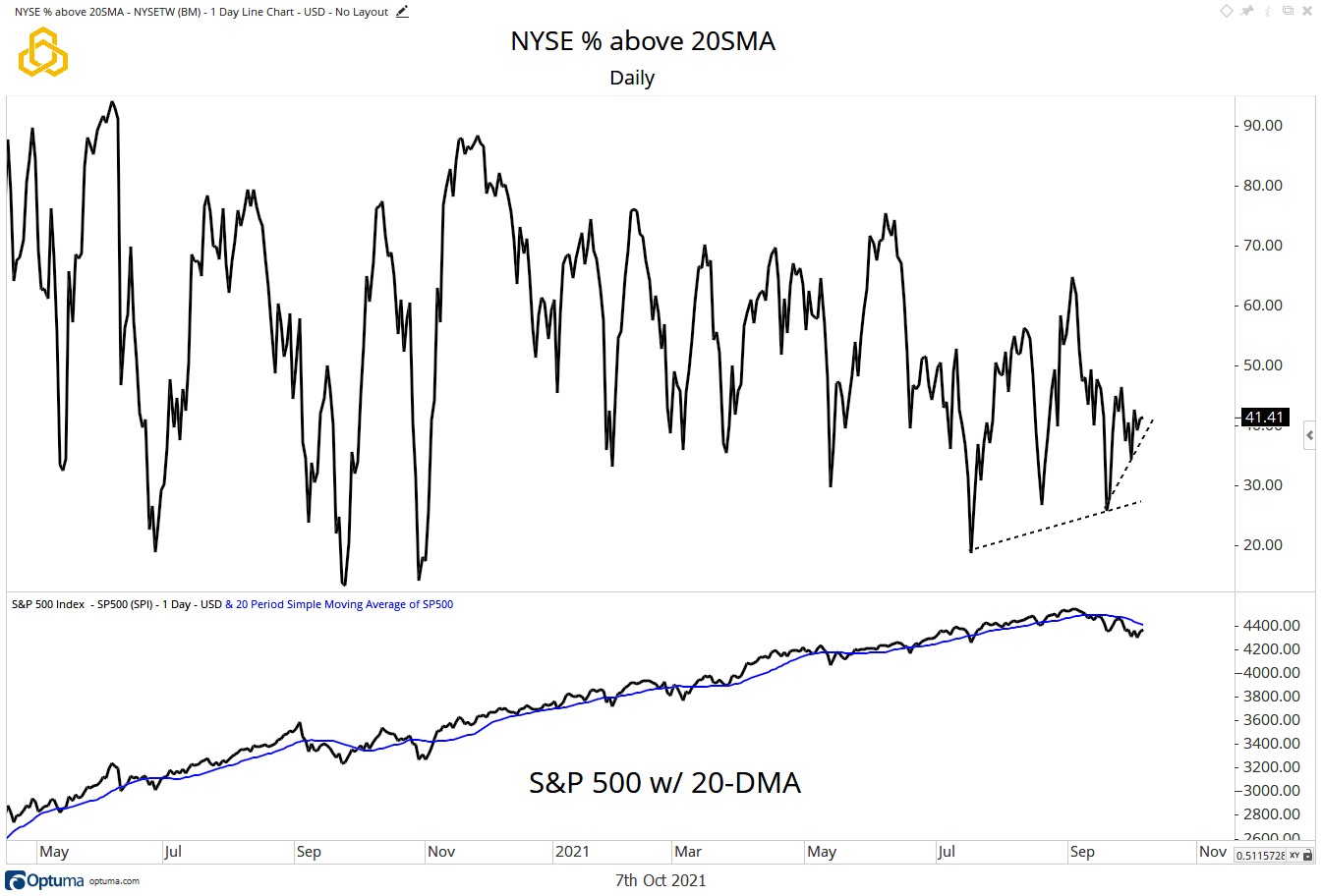
S&P 500 Breadth
Breadth metrics for the S&P 500 are mostly flat with the levels that were seen one week ago, but we do note the improvement in the 20-day metric:
- Advance/Decline Line: Below the 50-day moving average but did not make a lower low.
- Percent Above Their 200-Day Moving Average: 66% from 68% last week.
- Percent Above Their 50-Day Moving Average: 34% from 33% last week.
- Percent Above Their 20-Day Moving Average: 41% from 32% last week.
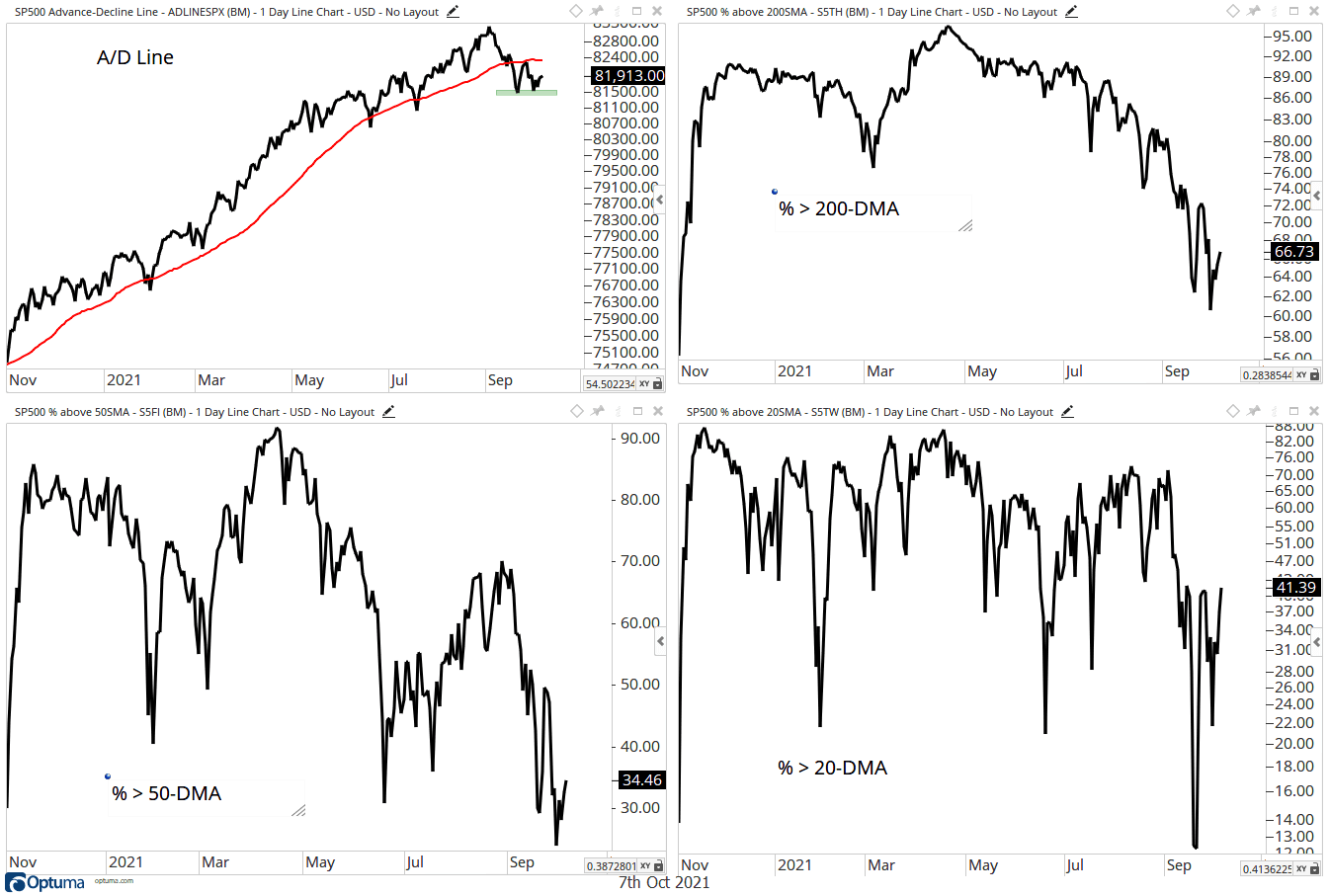
SmallCap Breadth
Breadth metrics for the S&P 600 Small Cap Index are mixed over the past week, with a small improvement in the 20-day data:
- Advance/Decline Line: Still trying to clear the 50-day moving average.
- Percent Above Their 200-Day Moving Average: 49% from 53% last week.
- Percent Above Their 50-Day Moving Average: 48% from 52% last week.
- Percent Above Their 20-Day Moving Average: 57% from 56% last week.

